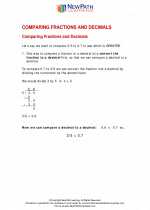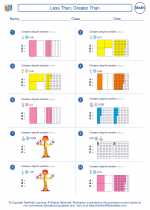Less Than, Greater Than
When comparing numbers, we use the symbols "<" (less than) and ">" (greater than) to show the relationship between two numbers. This helps us understand which number is larger or smaller.
Comparing Numbers
To compare numbers using "less than" and "greater than", we look at the value of each number and determine their relationship.
Less Than (<)
The symbol "<" is used to compare two numbers. It points to the smaller number and shows that the number on the left is less than the number on the right. For example: 3 < 5 (read as "3 is less than 5")
Greater Than (>)
The symbol ">" is also used to compare two numbers. It points to the larger number and shows that the number on the left is greater than the number on the right. For example: 7 > 4 (read as "7 is greater than 4")
Practice Problems
Now let's practice comparing numbers using "less than" and "greater than".
Problem 1:
Compare the following numbers: 8 and 12
Answer: 8 < 12 (read as "8 is less than 12")
Problem 2:
Compare the following numbers: 15 and 9
Answer: 15 > 9 (read as "15 is greater than 9")
Problem 3:
Compare the following numbers: 6 and 6
Answer: 6 is not less than or greater than 6, they are equal
Conclusion
Understanding the concepts of "less than" and "greater than" is important for comparing numbers and making sense of numerical relationships. Practice comparing numbers to become more comfortable with using these symbols.
.◂Math Worksheets and Study Guides Fifth Grade. Less Than, Greater Than

 Worksheet/Answer key
Worksheet/Answer key
 Worksheet/Answer key
Worksheet/Answer key
 Worksheet/Answer key
Worksheet/Answer key
